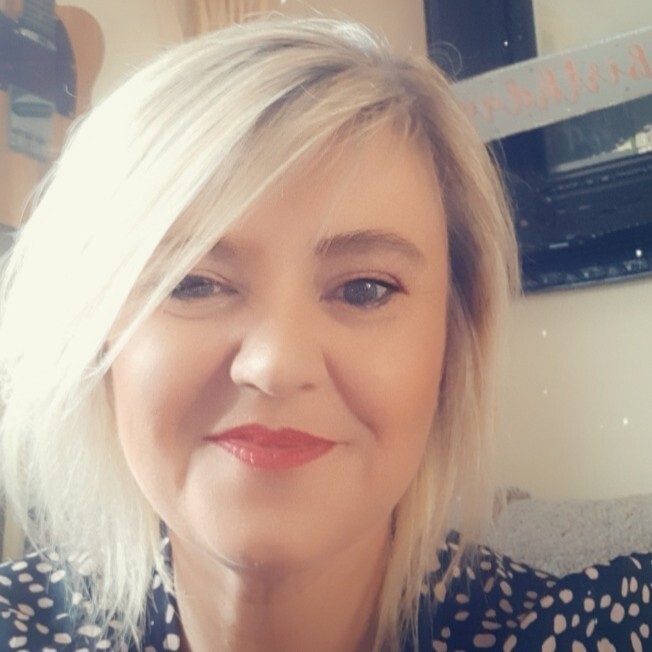
Last updated 23 April 2021 ·

As you begin to consider introducing OKRs (Objectives and Key Results) as a performance management framework into your business, it’s always best to start at the centre of the organisation, focusing on what the business leader/CEO is aiming to achieve at a high level within a set time frame, say the next 12 months. This is where the main company objectives will be set and ambitious goals created to move the organisation forward significantly in the right direction. Company wide OKRs are then cascaded throughout all teams to get everyone super aligned and engaged in the vision.
Remember when working with OKRs, the Objective can be more descriptive and qualitative in nature, referring to the ‘what’ you want to achieve. The Key Results are then more quantitative as these provide a key measure of success to be achieved towards the desired result. Key results should include specific, time bound and measurable goals by which to clearly track progress. If you don’t get this part right in the early days of creating OKRs, success levels could be jeopardised and you could find the process a lot more challenging than necessary. Check out our blog on Why OKRs Fail for more information.
In the excellent book ‘Execution,’ Larry Bossidy and Ram Charan state that there are ‘three core processes of execution;’ these are Strategy, Operations and People. They say that these three processes remain the essential building blocks that form the heart of highly effective execution.
As one of the core principles of the CEO role is to execute at pace, many of the CEO’s we work with focus heavily on creating their three main business objectives around having a robust, clarified Strategy, an excellent Operation that delivers value to the customer and the marketplace, as well as having excellent People doing the right job the right way.
So, as you begin in the centre of your business, focus on having three objectives covering Strategy, Operations and People. The main outcome you are looking for with OKRs is to execute at pace and ultimately get stuff done! By focusing on Strategy, Operations and People you’re going to get more of the right stuff done - remember, it’s not just about working hard, it’s about working hard on the right things.
It’s important that you focus on business, not busyness and make sure each of your main objectives has a very clear outcome. As you’re building your objectives think about what specific outcome you would like to see, hear or feel, that would mean you have achieved your objective. For example, considering your objective around Strategy, your outcome could be achieving a specific sales revenue figure or pre-defined profit goals. For your objective around Operations, the outcome could be achieving a specific NPS (Net Promoter Score) rating or a similar measure of customer satisfaction. Then for your objective around People, the outcome could be the specific impact you would expect when you have developed an elite team within your business.
The first step in this process as you sit down to write OKRs, is to decide what the main objectives would be for the business overall. What exactly is it that you, as the CEO, want to achieve in the next 12 months? Once you’ve done that, consider what would be the key results that you would need to achieve in order to deliver on each of these objectives. We recommend having 5 key results per objective, otherwise you could end up with 55 which makes things unnecessarily complicated and hugely dilutes focus.
To help you with this, we’ve provided some real life examples of OKRs created at a CEO level:
Objective One - Strategy:
We have developed a clear business strategy that delivers our planned 12 month growth of 20% whilst maintaining our gross margin of 30%. We’ve hit our profit target of 15% and the strategy is fully adopted across all areas of the business.
KR 1: We have completely scoped out our UDP (Unique and Differentiating Proposition) which is now fully understood by all areas of the business as well as our ideal target market. This has resulted in a 25% increase in high quality, marketing qualified leads coming through from all channels.
KR 2: We have clarified our ICA (Ideal Client Avatar) and ensured all marketing messages target and appeal to this individual. We are reaching out and connecting with our ideal prospect to enable a strong and aligned sales pipeline with a 20% uplift in qualified leads.
KR 3: The Marketing Strategy is established and in progress. Planned marketing activity has launched successfully and is generating 100 leads per month with a conversion of 30%.
KR 4: Our Channel Partner Sales Strategy is highly effective, delivering 10 leads per month and conversions have increased to 60%.
KR 5: Our Customer Referral Programme is having a positive impact on our growth strategy and the referral business contribution has risen to 50%. Our best customers are now influencers and ambassadors who are delivering more leads from ideal prospect clients.
Objective Two - Operations:
We have a truly excellent operation, documented in a detailed Operations Manual, that allows us to achieve our strategy whilst delighting our customers with exceptional service and as a result we achieve a market leading NPS of 80. We have won a customer service award for our high levels of service excellence in the industry.
KR 1: Our operations manual has been finalised, shared with the whole team and as a result we are seeing a more predictable customer experience in line with our high service standards. The strategic business units consistently pass internal operations audits, achieving over 90% scoring in quarterly audits.
KR 2: We have OGAPed (Outstanding, Good, Acceptable or Poor) our customer onboarding and made necessary changes to improve this from Good to Outstanding. New customers receive their WOW factor in 50% less time. We’ve benchmarked our business against the best in the industry and taken lessons from others such as Apple or Subaru to deliver excellent customer experiences. This results in a better experience for them and also impacts on our referral strategy KR 5 result above in our Strategy Objective.
KR 3: The Customer Success department has been established and is fully functional, achieving a customer retention rate of 85% or above.
KR 4: Our NPS score has increased from 56 to 75, making it world-class, thanks to the improvements in new customer onboarding and development of our Customer Success department.
KR 5: We were nominated by 5 customers for a customer service award and are now the proud winners of The Service Excellence Award. This is all thanks to improvements made in our operations and how we deliver value to our customers each and every day.
Objective Three - People:
We have an Elite Team of high performing individuals that are fully engaged. Our employee engagement score is above 75%. Every team member has a personal development plan. We have a robust performance management system that is transparent and matches the fast pace of business.
KR 1: The internal ‘Elite Team Programme’ has been created and all management level people have successfully completed the course achieving 85% or above. As a result of this our people feel fully invested in and become exceptionally well trained, resulting in a 20% increase in productivity.
KR 2: Our new performance management system has been fully adopted by all Heads of Department. Everyone has committed to the system, created their own PDP and is given 5hrs a month to work on this. As a result we are upgrading the calibre of our team and targets are being achieved ahead of time in 50% of cases. Employees are highly engaged and staff absence has reduced by 75%.
KR 3: Employee engagement is above 75% monthly average, thanks to all the internal training and development that has been introduced, this was previously at 50%.
KR 4: Every Elite Team member is tested quarterly against the Elite Programme Criteria and scores above 80%. We have established a successful way to constantly, train, test and develop our people. We are maximising the workforce skills and people are doing the right job best suited to them.
KR 5: We have clarified the Team Charter which feeds into an established recruitment engine to identify and onboard great people. The Team Charter is shared on social media and on a dedicated web landing page to attract a constant stream of new applicants with the right attitude who want to join your team. As a result of this, the recruitment timeline has now reduced from 16 weeks to 5 weeks and significant momentum has been established so recruitment is a continual process to enable the cadence of business growth.
As a side note, relating to this last key result above, I recall being in a meeting with a CEO of a very large travel business who commented, “early on we knew that there wasn’t going to be a shortage of opportunities, there was going to be a shortage of great people to take advantage of those opportunities. So we decided to build a ‘recruitment machine’ to ensure we had enough right people ready to join our business” This business has grown to become a huge success and recently sold out to a global business, achieving a healthy billion dollar sale price!
So here you have some examples of the 3 main objectives that a CEO of a growth focused business could have, as well as sets of key results for each one. The main things to consider with this OKR example is to have a clear outcome for each objective and then have clear, trackable key results that will deliver the desired objective.
From experience, we’ve seen that it is best to start at the centre of your organisation and then, once you, as the CEO, have got your OKRs in place, cascade these out from the centre to your Senior Leadership Team, then to your Management Team and then to your Supervisory Team. Doing it this way ensures the strategic business priorities are set at the top and maintained throughout the business so everyone knows exactly where to focus their efforts to have a positive impact on business performance. It’s important to get full support and buy in at each level of the business and commitment before rolling it out to another layer. For further guidance on this, check out our blog on 8 steps to cascade your company vision effectively.
If you want a brief chat about what your SLT OKRs could look like, reach out to me pete@reclaro.com and I will be happy to talk you through that.







